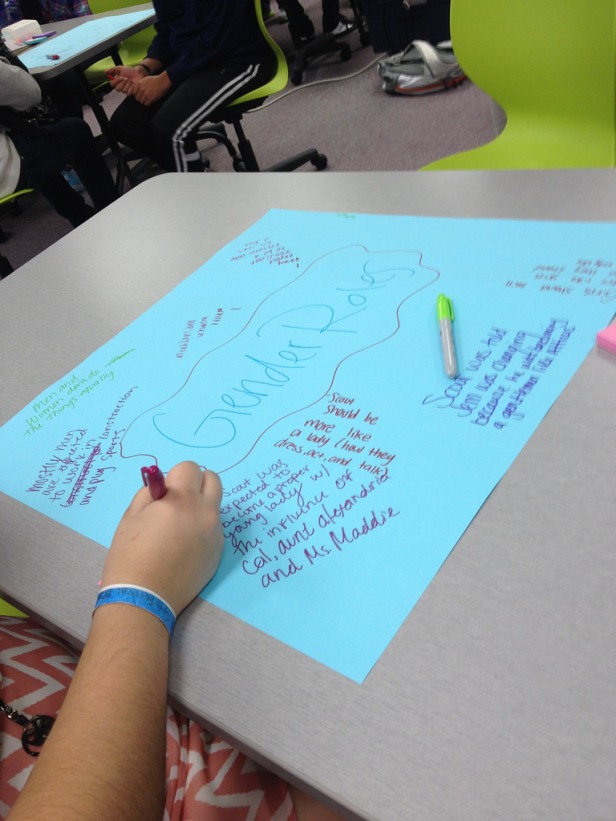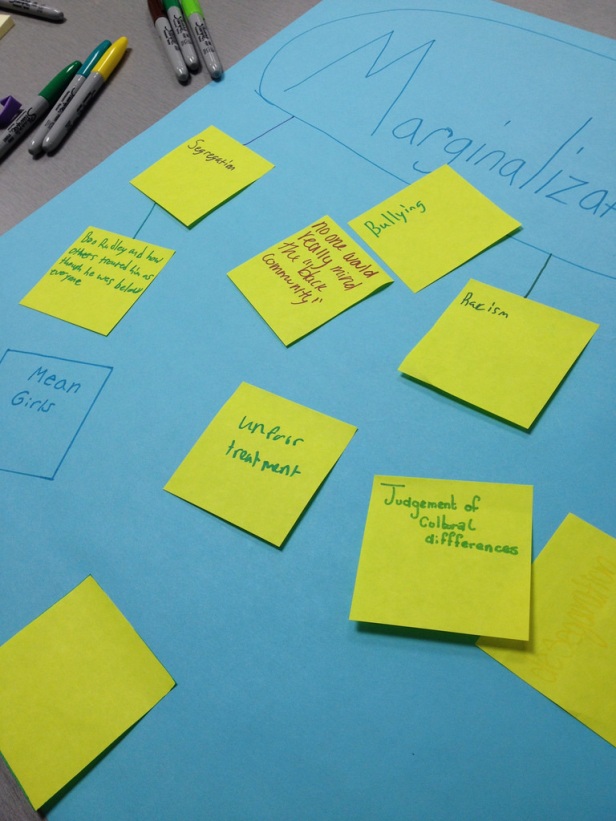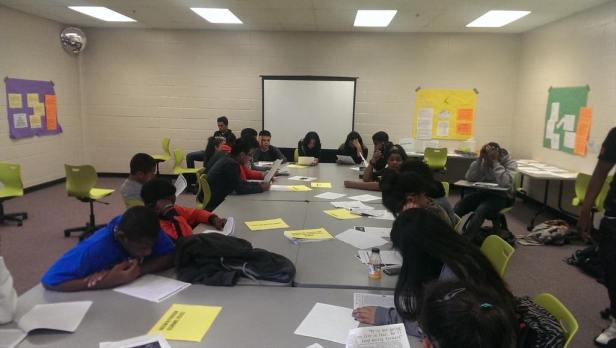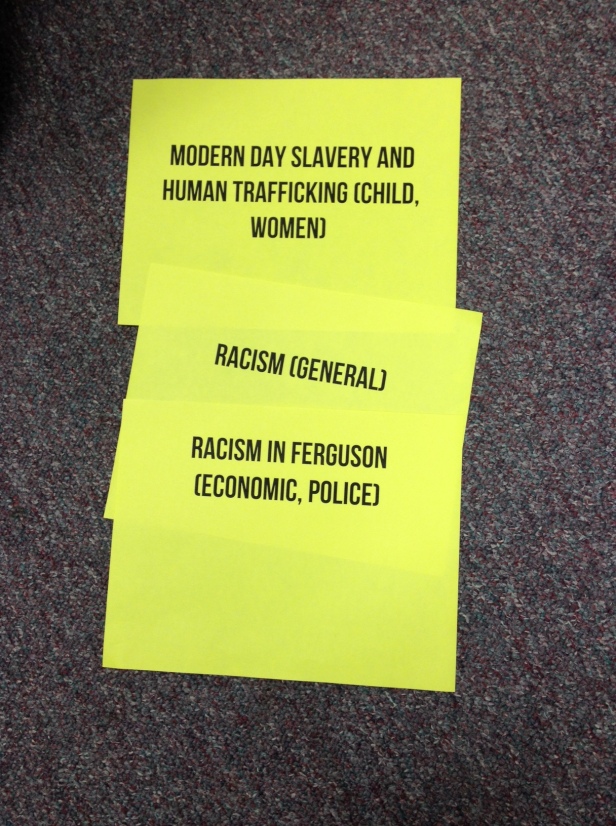
Like many of you, we’re always looking for ways to support students in their presearch processes. Finding starting points for topic selection is often difficult for students, especially if they have little or no experience in choosing a topic. In late March, we collaborated with Language Arts teacher Sean O’Connor and his freshmen classes to incorporate a blend of brainstorming/writing around topic ideas and a learning structure, Reading Frenzy, he learned earlier this year from Nancy Steineke at a workshop in New Orleans. Like us, Sean is a big fan of the work that both Nancy and Harvey Daniels do with inquiry, literacy, and ways to facilitate conversations for learning. Below is a video interview with Sean about the processes I have outlined below:
Sean kicked off their inquiry with having students write around motifs they had studied throughout their novel unit of To Kill a Mockingbird. Students used our large blue post-it notes to brainstorm historical and current topics related to a motif of interest; they then moved about and posed questions and feedback to their peers using smaller post-it notes.
This activity was the springboard to the reading frenzy, a learning structure that is flexible and gives students opportunities to skim, scan, and discuss multiple texts in a set time period. After we looked at the ideas students generated from the brainstorming/write-around activity, I pulled a wide range of articles related to their topics of interest from the web as well as our databases (Academic Search Complete, MAS Ultra Student Edition, various Gale databases) trying to include a variety of reading levels, publications/information sources, and perspectives on the issues and events.
Students passed around the articles and read them; they also discussed what they were reading with a neighboring buddy as something of interest got their attention. As students began thinking about more specific topic ideas as they read the article, they requested additional articles, and I was able for the most part to either produce those on the demand to go or to provide them the following day in class for follow-up. Other students who read an article that resonated with them requested I print additional copies, and I was more than happy to do this. After the first class, I decided to make article categories to make it easier for the students to go directly to piles of articles of interest to them.
We love these structures because they support students who already have a topic idea as well as those who might be a little less certain about a topic interest. It can also introduce new topics or more nuanced aspects of a topic to students. This investment of time ensured students enhanced their understandings of the novel’s motifs and connections of that motif to contemporary as well as historical events. This process also reinforced our efforts this year to really focus on helping teachers and students find ways to narrow or “crop” topic so that they can hopefully engage in deeper and more thoughtful inquiry. We feel this entry point is a particularly effective way to scaffold students who may have little research experience OR more experience at “reporting” vs. researching (see the blog of my colleagues at Letting Go for more on this idea). These activities prepared students to move forward strategically into presearch and to find articles on their own. They have now narrowed and refined their topic and are composing their research design plans to Sean. We are looking forward to seeing where they go from here with their research after our spring break as well as using the reading frenzy strategy with other classes!







Such great stuff, always love hearing from you! Will you be at ILA this summer in St Louis? Smokey Daniels
LikeLike
Smokey, you have been such an inspiration and your work has sparked so much good work at our school! Can you send me info about the ILA in St. Louis?
LikeLike
That looks as if every student is engaged. What wonderful ideas and thinking. I wish I could inspire our students to do this. I notice that none of your students are wearing the omnipresent eArbuds we have (laiSsez faire policy..”but oh MisS I can multi-task”). They fear research, self directed learning, failure, growing through learning.
LikeLike
Be assured we encounter the multitasking mindset every day as well! We try to help students to see when it is appropriate to be plugged in (i.e. earbuds), and when putting all of one’s energy and attention into a task or listening to others is the way to go. Increasingly, I see many students have had very little experience with these ways of learning in K-8—there is definitely a learning curve and scaffolding needed to help students in becoming participatory learners. It is not always easy but I truly believe worth the efforts! I am thankful for teachers like Sean who have the wisdom, patience, and willingness to give students these kinds of learning experiences! For every success you see, know we have our missteps too, but we try to learn from those and incorporate those insights into the next effort. I’m working on a draft post now that addresses that very challenge! Best, Buffy
LikeLike
Be assured we encounter the multitasking mindset every day as well! We try to help students to see when it is appropriate to be plugged in (i.e. earbuds), and when putting all of one’s energy and attention into a task or listening to others is the way to go. Increasingly, I see many students have had very little experience with these ways of learning in K-8—there is definitely a learning curve and scaffolding needed to help students in becoming participatory learners. It is not always easy but I truly believe worth the efforts! I am thankful for teachers like Sean who have the wisdom, patience, and willingness to give students these kinds of learning experiences! For every success you see, know we have our missteps too, but we try to learn from those and incorporate those insights into the next effort. I’m working on a draft post now that addresses that very challenge! Best, Buffy
LikeLike
Reblogged this on Lifelong Quest.
LikeLike